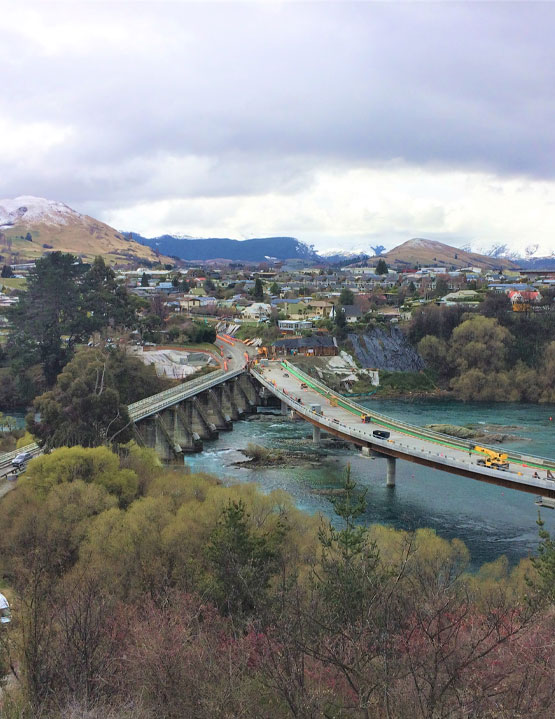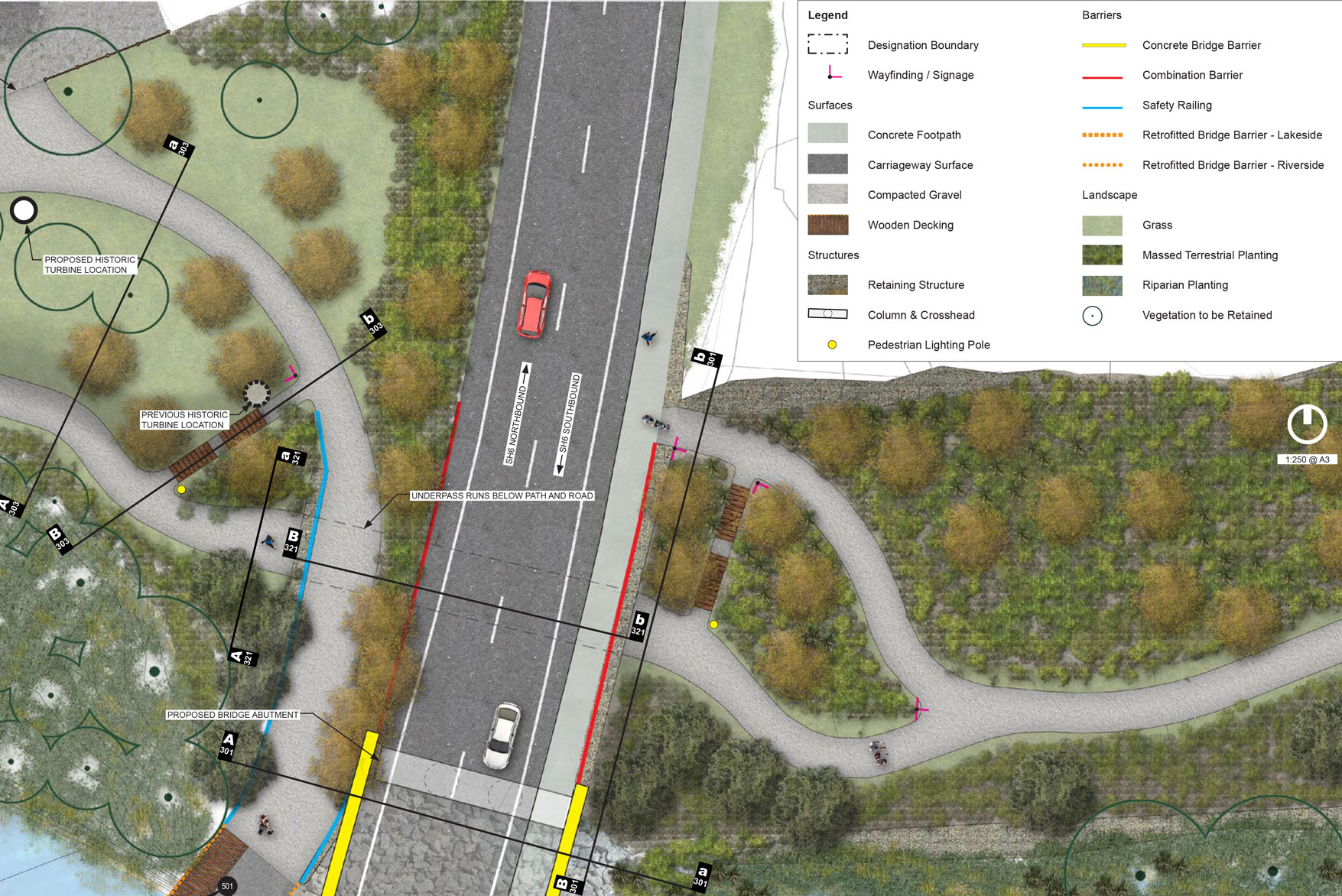Improving connectivity and safety across the Kawarau River, this infrastructure upgrade supports growing transport demands and enhances pedestrian access in Queenstown.
In 2015 Boffa Miskell was engaged to begin works on the Kawarau Falls Bridge project — construction of a new two-lane bridge on SH6 over the Kawarau River. The proposed bridge would see the reduction in traffic congestion, increase safety and provide more secure southern highway access into the Wakatipu Basin.
Boffa Miskell produced the Urban and Landscape Design Master Plan document to assist Queenstown Lakes District Council in assessing the proposed design by providing site specific detailed design and construction responses to address specific context and environmental conditions and circumstances of the project.


